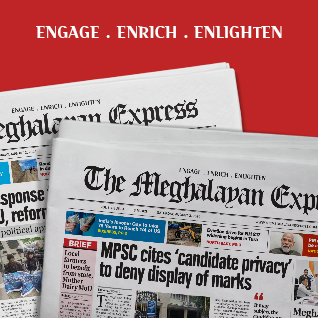By Dipak Kurmi
Education has long been heralded as the ultimate tool for empowerment and social mobility. However, in recent decades, its core purpose has been overshadowed by the rise of institutional branding, transforming education into an exclusive status symbol rather than an instrument of knowledge and growth. This phenomenon is especially pronounced in India, where the drive to democratize education is at odds with the increasing elitism associated with prestigious schools and universities.
The Branding Trap in Education
The obsession with elite educational institutions has led to a deeply entrenched hierarchy, where a student’s identity, worth, and career prospects are often dictated by the brand of their alma mater. The emphasis on branding is so strong that parents, even at great financial and personal cost, prioritize getting their children into “legacy institutions” rather than finding schools best suited to their individual needs.
As the founder of a well-known chain of schools, I have witnessed firsthand the mechanics of educational branding. In our early years, we dedicated immense resources to building an aspirational brand—focusing on logos, public relations, marketing, and advertising. Over time, The Millennium Schools gained national recognition. However, despite this success, I often receive more inquiries from parents seeking admission recommendations for “elite” institutions, regardless of their suitability or affordability. This illustrates a troubling reality—education has become more about exclusivity than learning.
A New-Age Caste System
The consequences of this branding-driven education system extend beyond individual students. Elite schools and universities serve as gatekeepers to economic and bureaucratic dominance. Graduates of institutions such as the Indian Institutes of Technology (IITs), Indian Institutes of Management (IIMs), and premier private schools overwhelmingly populate high-ranking corporate roles, policymaking circles, and bureaucratic offices. Recent studies indicate that over 60% of IAS officers and corporate CEOs hail from these elite institutions. This creates a feedback loop where access to power and privilege is restricted to a select group, reinforcing the divide between the privileged and the underprivileged.
The exorbitant fees of prestigious private schools—sometimes exceeding Rs 15 lakhs per year—ensure that only affluent families can afford them, further marginalizing students from lower economic backgrounds. Schools like Doon School and Mayo College continue to perpetuate a culture of exclusivity reminiscent of colonial-era privileges, making quality education an inherited advantage rather than an earned opportunity.
Society’s fixation on elite institutions also undermines the value of government schools and state universities, perpetuating the misconception that only private education guarantees success. This mindset discourages investment in public education and leaves millions of capable students without access to quality learning resources.
The Branding Divide: When Image Overshadows Education
Educational branding functions similarly to corporate branding, emphasizing exclusivity and prestige over substance. Schools invest heavily in marketing campaigns, infrastructural grandeur, and PR strategies, often at the cost of genuine academic improvement. The presence of glossy brochures, celebrity endorsements, and luxury facilities creates an illusion of superior education, diverting attention from teaching methodologies and curriculum development.
A stark example of this branding-driven approach can be found in any airline magazine, where educational institutions dominate advertising spaces, vying for attention with promises of international curriculums and world-class faculty. Yet, behind these polished images, many schools fail to deliver the transformative education they claim to offer.
The unequal distribution of resources further widens the gap between elite and public institutions. Prestigious schools attract disproportionate investments, donations, and sponsorships, while government schools and less-branded institutions struggle to secure basic funding. This results in a cycle where well-funded elite schools continue to thrive while others are left behind, exacerbating educational inequality.
Privilege in Numbers: The Institutional Monopoly on Success
The consequences of this hierarchical system are evident in India’s power structures. Studies indicate that nearly 60% of top bureaucrats and 50% of politicians come from elite educational backgrounds. When leadership positions in government, business, and policy-making are monopolized by graduates of a few institutions, we move further away from a truly meritocratic society.
A New Vision: Moving Beyond Branding in Education
To break this cycle, we must envision a world where schools function without branding pressures. Imagine a system where institutions are identified by neutral codes—such as N-329—rather than prestigious names. Such an approach could democratize education by eliminating status-based biases, ensuring that students are judged on merit rather than the prestige of their school.
This transformation would involve a nationwide commitment to equitable resource distribution, ensuring that rural and public schools receive the same support as their elite counterparts. A focus on holistic education—where learning outcomes, skill development, and personal growth take precedence over institutional branding—could redefine the purpose of schooling.
Eliminating branding pressures would also alleviate stress among students, fostering a healthier and more collaborative learning environment. Without the constant pressure to secure admission to “branded” institutions, students would be free to explore their interests and capabilities without the fear of being judged by societal standards of prestige.
Implementing Systemic Change
To initiate meaningful change, India’s education system must undergo policy reforms that prioritize accessibility, affordability, and quality across all schools. Key measures include:
- Promoting Neighborhood Schools: Encouraging a “walk-to-school” culture can reduce long commutes, foster community engagement, and enhance localized learning experiences.
- Equitable Resource Distribution: Government policies should ensure standardized quality assurance across all schools, with increased funding and accountability measures.
- Shifting Parental Mindset: Public awareness campaigns can help shift the focus from branding to learning outcomes, encouraging parents to prioritize education quality over institutional prestige.
- Public-Private Partnerships: Collaboration between the government and private sector can bridge resource gaps, improve infrastructure, and enhance learning opportunities for all students.
Education as an Equalizer
For education to truly fulfill its role as an equalizer, we must dismantle the elitist branding of institutions and refocus on student growth, knowledge acquisition, and skill development. A student’s worth should be defined by their abilities and character, not by the logo on their degree.
By transitioning “from prestige to purpose,” India can build an education system that nurtures talent across all demographics, ensuring that every student—regardless of socioeconomic background—has the opportunity to succeed. The shift towards a unified, inclusive educational framework will not only democratize learning but also lay the foundation for a more equitable and just society.
(the writer can be reached at dipakkurmiglpltd@gmail.com)



